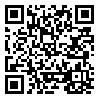Sun, May 25, 2025
[Archive]
Volume 37, Issue 1 (2-2023)
Med J Islam Repub Iran 2023 |
Back to browse issues page
Download citation:
BibTeX | RIS | EndNote | Medlars | ProCite | Reference Manager | RefWorks
Send citation to:



BibTeX | RIS | EndNote | Medlars | ProCite | Reference Manager | RefWorks
Send citation to:
Askarzade E, Nabizade Z, Goharinezhad S, Mostaghim S. Universal Health Coverage in Iran: A Review of Strengths, Weaknesses, Opportunities, and Threats. Med J Islam Repub Iran 2023; 37 (1) :40-48
URL: http://mjiri.iums.ac.ir/article-1-7899-en.html
URL: http://mjiri.iums.ac.ir/article-1-7899-en.html
Department of Health Care Management, School of Health Management and Information Sciences, Iran University of Medical Sciences, Tehran, Iran , Mostaghim.so@iums.ac.ir
Abstract: (1754 Views)
Background: Universal health coverage (UHC) aims to provide access to basic health services with no financial constraints. In Iran, the major challenges to the implementation of the UHC plan include aggregation and augmentation of resources, something which could threaten the dimension of population coverage and health service delivery. Therefore, this study reviews the strengths and weaknesses of the internal environment as well as the opportunities and threats of the external environment in the UHC plan to help policymakers and decision-makers of the health system.
Methods: In this review study, reputable databases were searched for all the relevant papers on UHC to collect data. After that, the strengths, weaknesses, opportunities and threats (SWOT) analysis was conducted to organize, collect, and analyze data. The SWOT analysis is a process that has 4 components and 2 dimensions. The 4 components are strengths, weaknesses, opportunities, and threats. In fact, strengths and weaknesses are considered internal factors and organizational features, whereas opportunities and threats are considered external factors and environmental features. The listed items were then categorized for clarification and transparency within the framework of the 6 building blocks of the World Health Organization (WHO).
Results: The relevant studies were reviewed to analyze the strengths and weaknesses of internal environments as well as the opportunities and threats of external environments. The necessary points for better planning and policymaking were then presented.
Conclusion: The success of Iran’s UHC plan can be guaranteed by regular capacity building, ongoing education, and empowerment of society in addition to improving intersectoral collaboration and acquiring political commitment to develop more effective and more accountable systems matching variable and dynamic health requirements.
Methods: In this review study, reputable databases were searched for all the relevant papers on UHC to collect data. After that, the strengths, weaknesses, opportunities and threats (SWOT) analysis was conducted to organize, collect, and analyze data. The SWOT analysis is a process that has 4 components and 2 dimensions. The 4 components are strengths, weaknesses, opportunities, and threats. In fact, strengths and weaknesses are considered internal factors and organizational features, whereas opportunities and threats are considered external factors and environmental features. The listed items were then categorized for clarification and transparency within the framework of the 6 building blocks of the World Health Organization (WHO).
Results: The relevant studies were reviewed to analyze the strengths and weaknesses of internal environments as well as the opportunities and threats of external environments. The necessary points for better planning and policymaking were then presented.
Conclusion: The success of Iran’s UHC plan can be guaranteed by regular capacity building, ongoing education, and empowerment of society in addition to improving intersectoral collaboration and acquiring political commitment to develop more effective and more accountable systems matching variable and dynamic health requirements.
Type of Study: Review Article |
Subject:
Health System
Send email to the article author
| Rights and permissions | |
 |
This work is licensed under a Creative Commons Attribution-NonCommercial 4.0 International License. |








